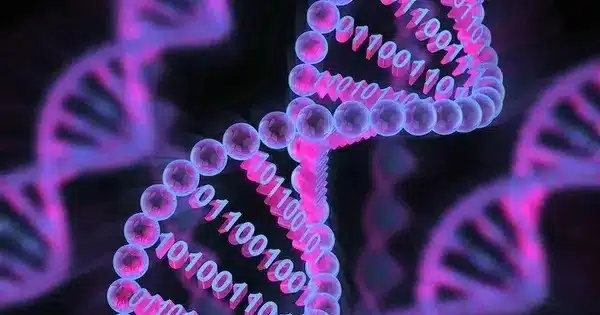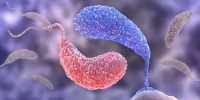Bacterial genomes are the whole set of genetic material contained within a bacterium’s DNA. When compared to eukaryotic genomes, they are often smaller and less variable in size between species. Bacterial genomes can range in size from approximately 130 kbp to more than 14 Mbp. Bacteria are unicellular creatures that can take a variety of shapes and sizes. Their genomes are often far smaller and more compact than those of eukaryotic creatures such as plants, mammals, and fungus.
A study that included, but was not limited to, 478 bacterial genomes found that when genome size rises, the number of genes increases at a slower rate in eukaryotes than in non-eukaryotes. Thus, the proportion of non-coding DNA increases with genome size faster in non-bacteria than in bacteria. This is congruent with the fact that most eukaryotic nuclear DNA is non-coding, whereas the bulk of bacterial, viral, and organellar genes are coding. Currently, we have genome sequences from 50 bacterial phyla and 11 archaeal phyla.
Second-generation sequencing has produced numerous draft genomes (almost 90% of bacterial genomes in GenBank are currently incomplete); third-generation sequencing could eventually produce a full genome in a few hours. The genome sequences of bacteria reveal a great deal of variation. An analysis of over 2000 Escherichia coli genomes revealed an E. coli core genome with approximately 3100 gene families and a total of approximately 89,000 gene families.
Key features of bacterial genomes include:
- Circular DNA: In most bacteria, the genomic DNA is organized in a circular structure. This is in contrast to the linear DNA found in eukaryotic cells.
- Plasmids: Bacteria often carry extra-chromosomal DNA elements called plasmids. Plasmids are smaller, circular pieces of DNA that are separate from the main bacterial chromosome. They can carry genes that provide advantages such as antibiotic resistance, virulence factors, or the ability to metabolize specific nutrients.
- Size: Bacterial genomes are typically much smaller than eukaryotic genomes. They can range in size from a few hundred kilobases to a few megabases.
- Gene Density: Bacterial genomes tend to have a high gene density, meaning that a large proportion of the DNA codes for genes. This is partly because they lack introns, non-coding regions found in eukaryotic genes.
- Operons: Many bacteria organize their genes into operons, where multiple genes with related functions are transcribed together as a single mRNA molecule. This allows for coordinated regulation of gene expression.
- Horizontal Gene Transfer: Bacteria can acquire new genetic material through horizontal gene transfer mechanisms such as transformation, transduction, and conjugation. This contributes to the adaptability and evolution of bacterial populations.
- Genomic Plasticity: Bacterial genomes can demonstrate a high degree of plasticity, with rapid changes in gene content and organization. This flexibility enables bacteria to react swiftly to environmental changes.
The genome sequences reveal that parasitic bacteria have 500-1200 genes, free-living bacteria have 1500-7500 genes, and archaea have 1500-2700 genes. Cole et al. discovered huge rates of gene degradation when comparing Leprosy bacillus to ancestral bacteria. Several bacteria have smaller genomes than their forebears, according to recent research. Researchers have presented various explanations over the years to explain the overall trend of bacterial genome breakdown as well as the relatively tiny size of bacterial genomes. Compelling evidence suggests that the apparent deterioration of bacterial genomes is due to a deletional bias.
Bacterial genome analysis is critical for understanding bacterial physiology, disease, and evolution. Advances in DNA sequencing technology have made bacterial genome sequencing easier and more cost-effective, resulting in a wealth of genomic data for a wide range of bacterial species. Comparative genomics enables researchers to find shared characteristics, distinct properties, and evolutionary links among various bacterial strains and species. This understanding is critical for developing antibacterial techniques, as well as discovering new antibiotics and vaccines.















